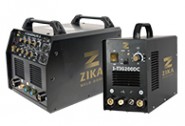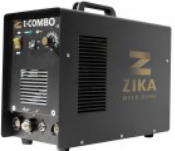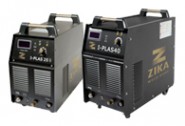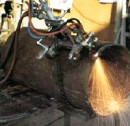WELDING & CUTTING MACHINES
OVERVIEW
Welding machine is a device that provides an electric current to perform welding. Welding machines can be also called welding power source or welding power supply. Many types of power sources are necessary to meet the unique electrical requirements of the various arc-welding processes. Welding machines include those for shield metal arc welding (SMAW), gas metal arc (GMAW), flux core arc (FCAW), gas tungsten arc (GTAW), submerged arc (SAW), electroslag (ESW), electrogas (EGW), plasma arc (PAW), and arc stud welding (ASW). The voltage supplied by power companies for industrial purposes is too high to use directly in arc welding. Therefore, the first function of welding machines is to reduce the high input or line voltage to a suitable output voltage range 20-80 V. Either transformer, solid-state invertor or motor generator can be used to reduce 120, 240 or 480 V utility power to the rated terminal or open circuit voltage appropriate for arc welding. The same device (transformer or motor generator) also provides a high welding current, generally ranging from 30 to 1500 A. The typical output of welding machine maybe alternating current (ac), direct current (dc), or both. It may be either constant-current, constant voltage, or both. It may also provide a pulsing output mode. Some source configurations deliver only certain types of current. For example, transformer type power sources will deliver only alternating current. Transformer rectifier power sources may deliver either ac or dc. Electric-motor generator power sources usually deliver direct current output. A motor-alternator will deliver ac, or when equipped with rectifiers, dc.












